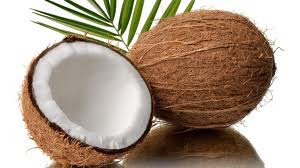Eliminating carbohydrates entirely from daily diets is becoming a very popular choice by those who want to lose weight. There are those who look up the glycemic index of a food to see if it has significant carbohydrates in it or not. Unfortunately when you eliminate all carbohydrates from your diet, your health and well-being can be at risk. Our bodies need
some daily carbohydrates for mental and physical energy. Our brain depends on a steady supply of glucose to function properly, otherwise you may experience "spacey"-ness or brain fog.
What is the Glycemic Index?
The glycemic index (GI) helps us understand how to rate simple and complex carbohydrates relative to how
quickly they breakdown and are absorbed into our body as glucose (sugar). For diabetics this process is critical as we may need to compensate with insulin, medications, exercise or other food choices (i.e., protein based foods). For athletes it is important, as carbohydrates affect your blood sugar metabolism and can thus affect your performance ability. For "normal" people, too many carbohydrates might show up as a sugar high, where your head or heart is pounding, or you experience over-excitability. The crash of a sugar low might manifest itself as a migraine, fatigue, sleepiness or nausea.
The glycemic index is basically calculated by measuring the blood glucose response to 50 grams of a specific food over a two hour period to obtain a relative index value.
What is Glycemic Load?
Glycemic load (GL) is different in that it rates food according to its carbohydrate and fiber
composition. It is calculated by
multiplying the GI value by the "available carbs" per serving (carb grams minus the fiber grams = available carbs)
and then dividing it by 100 to obtain the index value.
Foods with a GL of 10 or less are good choices for stabilizing blood sugar levels. These foods normally include
fresh vegetables and fruits with
fiber, rather than processed items. Foods rated in the 11-19 load category (see chart below), have a moderate affect on blood sugar, and those 20 and over should be eaten sparingly as they spike blood sugar levels very quickly. (There are a couple food list links posted below.)
When blood sugar is raised and lowered often enough over a long-term basis, the insulin receptors in your body will tend not to absorb the glucose. This causes fatigue and will eventually cause pre-diabetes and diabetes.
How can you tell what your blood sugars are doing?
First, you can evaluate your food choices by looking at and analyzing a Glycemic Index and/or Glycemic Load Chart similar to this one at
etoolsage.com. You will need to scroll down the page to view the food choices listed under the
low GI Index Chart tab. There are two other
tabs for
Medium GI and
High GI food items, as well as a
Search tab to find a specific food quickly. You can track your food choices in a daily journal to see your personal pattern of eating. Other sources of GI and GL charts are available online, you can pick one that is most helpful for you to understand and use.
NutritionData.com is another excellent resource for complete nutritional breakdown of thousands of food options.
Second, you can check your own blood sugar levels with a
glucose meter. This link gives you useful information about how to use a meter, and how to obtain one of many fairly inexpensive meters along with test strips. The benefit of knowing your blood glucose level and adjusting your food choices accordingly, certainly outweighs the future costs of becoming a diabetic. If your test numbers show consistently over 100, two hours after eating your carbohydrate meals, this would be a good indicator for you to talk with your healthcare physician as soon as possible. Your journal of food choices would be beneficial for your physician to review as well. An A1c blood test may be ordered to evaluate your blood sugar levels over the last 3 month period. Your physician will determine your risk for diabetes or not.
I'm convinced if I had been educated about glycemic index and glycemic load when I was diagnosed as pre-diabetic and had been encouraged to test my blood on a daily basis, I might have been able to control my blood glucose much better and perhaps never developed Type 2 diabetes. If you are in this state of health, please think it through seriously and begin testing today. If you know a friend, family member or co-worker who has pre-diabetes, please share this article with them. It may very well be the "boost" they need to seriously track their food choices and make a real difference in their future health.
Thanks for visiting today! Wishing you a delightful day - blessed with kindness and love. If you have any comments or information on this topic, I'd love to hear from you!
For more information from a wise counsel, please check out these links:





